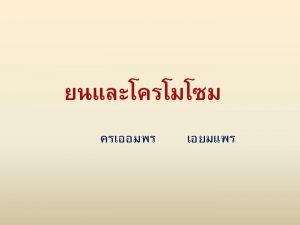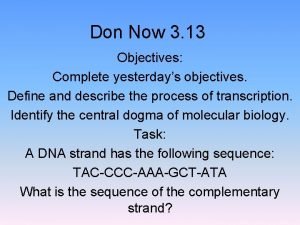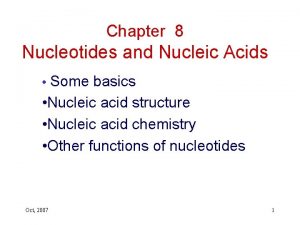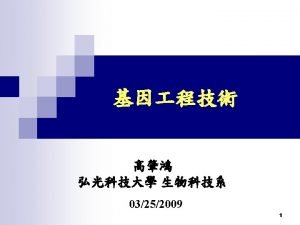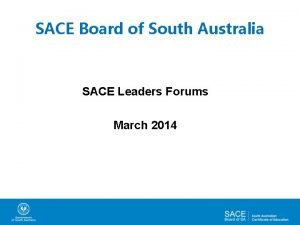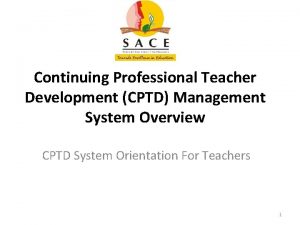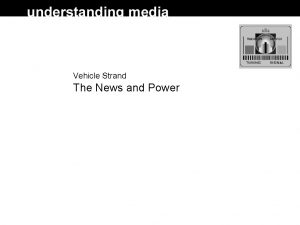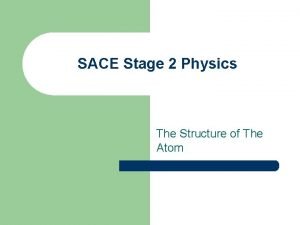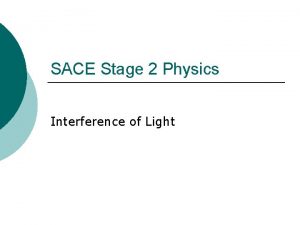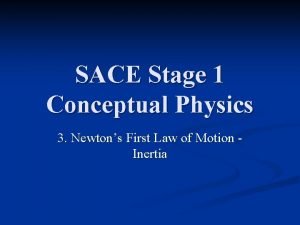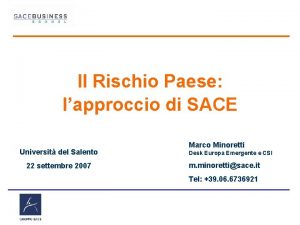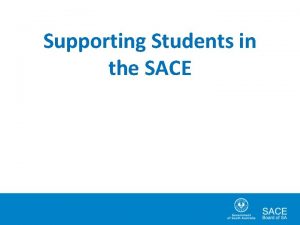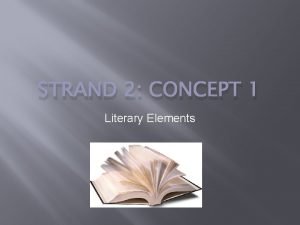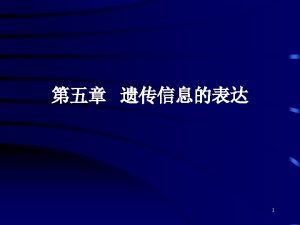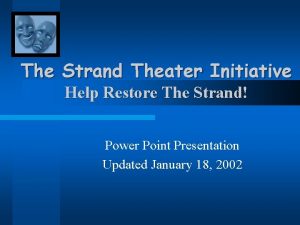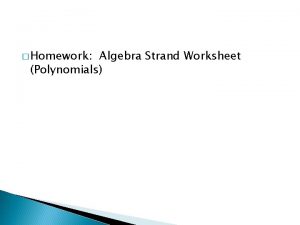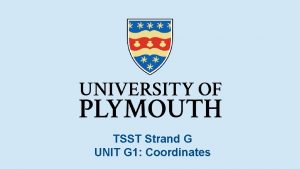STRAND 1 Requirements of SACE STRAND 2 Why














- Slides: 14

STRAND 1: Requirements of SACE STRAND 2: Why the Romantic Poets? STRAND 3: Pedagogy and Resources

STRAND 1: REQUIREMENTS OF SACE Students of English Studies need to: - develop the ability to “analyse texts, demonstrating depth of understanding through the identification of the structural, conventional, and stylistic features used by authors” - understand their interpretation must take into account the writer’s sociohistorical context and the influences of their own cultural context on their interpretation - be able to “compare and contrast the ways in which texts are constructed” and understand the way that reveals the purpose and meaning of the texts and influences the reader’s understanding and response to theme/s - be able to identify and “use evidence to develop and support critical reasoning in the form of sustained argument” when comparing and

STRANDS 1, 2&3: CONNECTING THE ROMANTICS TO THE SACE REQUIREMENTS - understand their interpretation must take into account the writer’s socio-historical context and the influences of their own cultural context on their interpretation The transformation of England due to the Industrial Revolution “created many hardships as well as chances for selfimprovement. In the countryside, enclosures were displacing or destroying time-honoured communities with increasing rapacity. In the overcrowded cities, conditions were often desperate. Social divisions widened and deepened. A series of bad harvests drove up the price of bread (a family which paid six pence for a 4 lb loaf in 1793 paid one shilling and four pence for it in 1800). Parliament did nothing to alleviate the miseries of a large part of the population; it did not want to disturb the status quo and was frankly terrified that the Revolution in France – let alone other popular uprisings in America, Holland, Poland Ireland- might lead to similar turmoil at home. ” Keats, Andrew Motion, (Faber and Faber: London), 11 “Food riots erupted across the country in every year between 1792 and 1796, and at the end of the century they were ‘very extensive indeed’. (Ibid. 12) It was a time of industrial, social and cultural progress and improvements in hospitals, but also of deprivation and terrible

BIRTHS Blake Wordsworth Keats Coleridge __________________________________________ 1750 1770 1790 1810 1830 1850 DEATHS Blake Wordsworth Keats Coleridge __________________________________________ 1750 1770 1790 1810 1830 1850

STRAND 3: PEDAGOGY AND RESOURCES WILLIAM BLAKE: London Holy Thursday The Chimney Sweeper WILLIAM WORDSWORTH: The World is Too Much With Us London, 1802 SAMUEL TAYLOR COLERIDGE: Frost at Midnight JOHN KEATS: Ode to a Nightingale

STRANDS 1, 2 &3: CONNECTING THE ROMANTICS TO THE SACE CAPABILITIES - Students learn how to communicate to suit particular purposes, contexts, and situations. Through discussion and reflection, students “come to realise that different text types…have their own distinctive stylistic features. ” TYPICAL PURPOSES, CONTEXTS AND FEATURES OF THE ROMANTIC POETS: -elevated the imagination and the expression of emotions -valued the personal experience (in contrast to the idea that only certain subjects are worthy of poetic expression) -critical of institutionalised education and religion -proponents of freedom of thought and expression -valued the experience and language of the ordinary citizen -associated nature with freedom, the capacity to nurture and develop one’s character and to inspire -searched for truth and did not try to disguise reality with idealised images and elevated diction -keenly aware of all their senses in response to their environment -often emphasise the melancholy and solitude as well as seeking answers to spiritual questions -sensitive to the contrarieties of life (Songs of Innocence and Experience/beauty and terror of nature/the immortality of the artist’s work in contrast to the artist’s transience

STRANDS 1, 2 &3: CONNECTING THE ROMANTICS TO THE SACE CAPABILITIES - Students learn that they have the capacity to be active citizens and that the power of words “enables (them) to participate in and critique social, cultural and economic aspects of local, national and global society” and understand that “their sense of identity, both individual and collective, is shaped and defined by this participation. ” - challenged to question social institutions such as education, marriage and religion challenged to pursue paths to truth challenged to consider our mutability and mortality challenged to consider the nature of love, the human condition and of social revolution challenged to understand the importance of preserving nature and its role in teaching us about life challenged to understand empathise with the ideas, views and experiences

STRAND 3: PEDAGOGY AND RESOURCES WILLIAM BLAKE: The Lamb Holy Thursday London The Tiger The Garden of Love WILLIAM WORDSWORTH: The Prelude SAMUEL TAYLOR COLERIDGE: Frost at Midnight The Rime of the Ancient Mariner JOHN KEATS: Ode to a Nightingale Ode on a Grecian Urn “Beauty is truth, truth beauty, ” – that is all Ye know on earth, and all ye need to know.

STRANDS 1, 2 &3: CONNECTING THE ROMANTICS TO THE SACE CAPABILITIES - Students develop their “capacity to reflect on their own experiences” through “reading a variety of texts as well as writing and speaking about issues that affect them individually, or as…a group. ” Doing an Oral Presentation on the Romantic Poets at the beginning of Term 4 ensures that they have revised their poetry over the holidays and are ready for the exam. One of the assessment criteria (An 1) specifically asks them to analyse complex connections between personal experiences, ideas, values and beliefs, and those explored in familiar and unfamiliar texts. The Romantic Poets are an ideal way to challenge our students to think

STRAND 2: WHY THE ROMANTIC POETS? - the forerunners of modern poetic sensibilities and forms - they cover an interesting period of social and political upheaval that engages the students’ interest and gives them an understanding of writers as critical observers and shapers of their times - their themes and stylistic features are supremely adaptable to almost any type of question in the exams - the poets and their poems have sufficient similarities to draw comparisons, yet also interesting differences in style and themes to reflect on and debate

STRAND 2: STUDYING THE ROMANTIC POETS CAN: - show students the way different poets can communicate their ideas in a language and form that is accessible to a broad audience - demonstrate the power of poetry to challenge us to consider new perspectives - enable them to see their social, religious and political institutions in a new light - teach them to question conventional wisdom and recognise their “mindforged manacles” - show them that they can be a conduit for ideas, and change agents in society - demonstrate that with that freedom, and the power of the written word, comes the responsibility to communicate their ideas clearly and powerfully as they are on voice among many voices, speaking into a society which can

STRANDS 2 & 3: PEDAGOGY AND RESOURCES - the forerunners of modern poetic sensibilities and forms - * Individualism - expressing personal experience and emotions * Socialism and the ideals of upholding common humanity * Freedom of thought and expression * Decision-making by the citizens rather than by the ruling class * Freedom from the strictures of the Neo-classicists who made erudite references to the classics and wrote epic poems in elevated language, distinguishing themselves from others * Use of the language of the “common man” * Love of nature * Questioning attitude and inquiry-based education that values learning outside of the institution * Interest in spirituality and the quest for spiritual certainty

STRAND 3: PEDAGOGY AND RESOURCES - their themes and stylistic features are supremely adaptable to almost any type of question in the exams - Themes: church -to be truly human requires a freedom which nature provides and nurtures in us -we need to be free to critique social institutions such as governments, marriage, the -there is a nobility in the ordinary person and their experiences and emotions -our thoughts need to be rooted in experience in order to be authentic -life reflects the cyclical character of Nature and this is something to be celebrated -imagination is the elevating factor that enables human beings to achieve grandeur/nobility - Stylistic Features: -exclamations -images from nature dialogue extended metaphor odes/sonnets/ballads personal experience

STRAND 3: PEDAGOGY AND RESOURCES - the poets and their poems have sufficient similarities to draw comparisons, yet also interesting differences in style and themes DISTINGUISHING FEATURES: BLAKE WORDSWORTH COLERIDGE KEATS -spiritual questioning -struck by the contrasts within nature and between nature and humankind -used nature to show the corruption of human nature -used many biblical allusions, even though he explored many types of spirituality -questioned God and criticised the Church of England -waited on Nature and allowed Nature to teach him, rather than using Nature for his own purposes -associated Nature with liberty, “life” and “enduring things” -saw both the beauty and terror in Nature as essential to his maturity and to becoming his “best self” -believed the poet needed tranquil moments to reflect on Nature’s lessons -believed in the imagination that distinguished the poetic genius from others -a mystical view of nature -superstitious and supernatural powers evident -often used light and dark symbolically in his poems -used references to classical Greek myths and art -unable to reconcile the contrarieties of human existence -subject to melancholy because of the transience and mutability of the human condition -strongly desired immortality
 Andreas carlsson bye bye bye
Andreas carlsson bye bye bye Leading strand and lagging strand
Leading strand and lagging strand Mrna strand that is complementary to the dna strand aattgc
Mrna strand that is complementary to the dna strand aattgc Template strand, new strand, base pair, and dna polymerase.
Template strand, new strand, base pair, and dna polymerase. Phosphoanhydride bond
Phosphoanhydride bond Watson strand crick strand
Watson strand crick strand Sace aggregate
Sace aggregate Cptd
Cptd Plato sace
Plato sace Sace stage 2
Sace stage 2 Sace wave
Sace wave Sace stage 2 physics
Sace stage 2 physics Sace wave
Sace wave Sace stage 1 physics
Sace stage 1 physics Scheda paese sace
Scheda paese sace

